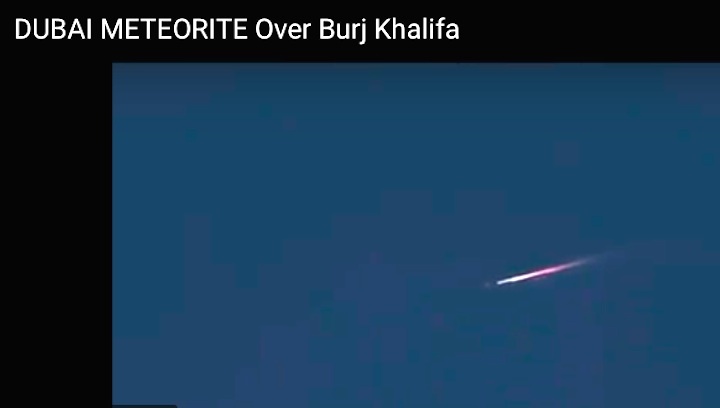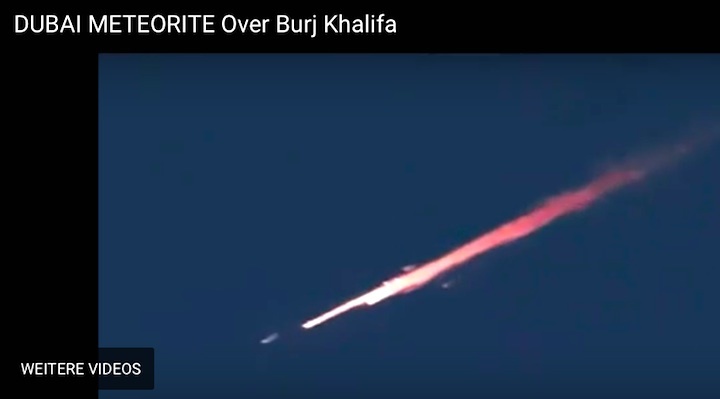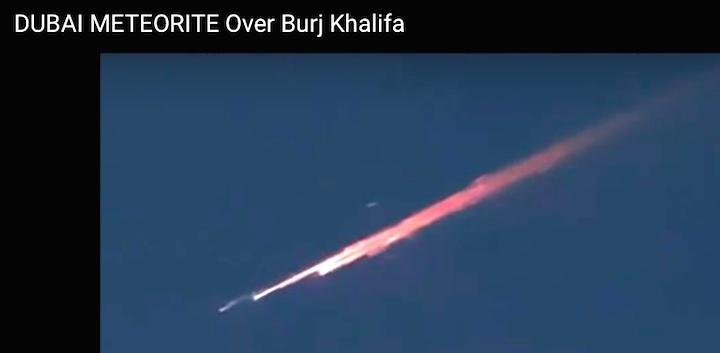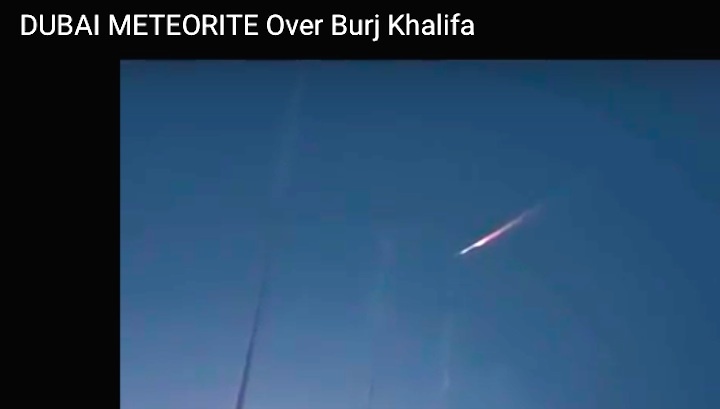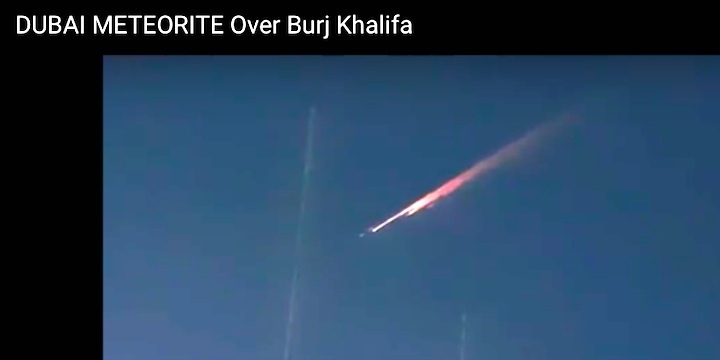18.10.2017
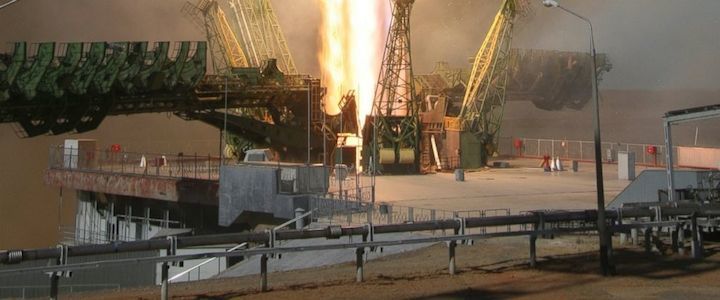
Parts of unmanned Russian spaceship burn up over Dubai
Parts of an unmanned Russian cargo spaceship burned across the night sky of the Arabian Peninsula, drawing gasps from Dubai to Riyadh before breaking up in the Earth's atmosphere and scattering in the Indian Ocean.
The fiery end Monday night to parts of Progress MS-07 came as planned after it delivered 2.5 metric tons (2.75 tons) of water, food and scientific equipment to the astronauts aboard the International Space Station.
But its 80-second appearance in the skies of the United Arab Emirates stunned onlookers in a region where Iran regularly test-fires ballistic missiles and Shiite rebels in Yemen have threatened to use them against Abu Dhabi. Even a day later, government officials still hadn't corrected their earlier statements identifying the object as a meteor.
The disposable spacecraft blasted off Saturday from the Russian-leased Baikonur launch complex in Kazakhstan. Its rockets and stages earlier fell harmlessly and largely unnoticed into the atmosphere, said Hasan Ahmad al-Hariri, the CEO of the Dubai Astronomy Group.
Parts of the ship could be seen re-entering the atmosphere from 7:35 p.m. (1535 GMT) Monday, al-Hariri said. It streaked across the Dubai skyline behind the Burj Khalifa, the world's tallest building, drawing both stunned and anxious reaction from those watching.
"It was quite visible for the public," al-Hariri told The Associated Press. "It's not something you see every day. It was beautiful to see that thing up in the sky, disintegrating into pieces."
Soon, "people were banging me with calls," he said.
The governmental Dubai Media Office, citing the sheikhdom's Mohammed bin Rashid Space Center, quickly described the aerial display a "meteorite." The UAE's General Civil Aviation Authority said in a statement that "the meteor was a natural and regular phenomenon at this time of the year."
But it wasn't a meteor. Al-Hariri said it was a 6.5-meter (21.3-foot)-long "module" from the launch breaking up some 140 kilometers (87 miles) in the sky.
NASA told the AP on Tuesday night that the spaceship's cargo made it to the International Space Station early Monday morning. U.S. Strategic Command, which oversees America's nuclear and missile arsenal, told the AP the object over Dubai was the ship's SL-4 rocket body.
"It re-entered the atmosphere Oct. 16, 2017, over the Persian Gulf at approximately 1530" GMT, said U.S. Air Force Maj. Brian L. Maguire.
The Mohammed bin Rashid Space Center, which hopes to launch a probe to Mars in 2020, did not respond to a request for comment on Tuesday.
The UAE announced in February it wanted to build the first city on Mars by 2117.
For al-Hariri, whose semi-governmental organization hopes to soon open its Al Thuraya Astronomy Center along the flight path of the Dubai International Airport, the incident Monday night shows the importance of educating the public about the wonders of space. He noted that despite the UAE's rapid development, its empty deserts offer beautiful viewing of the stars at night, including glimpses of the Milky Way.
"It was something that was really worth to look at," he said. "It was beautiful to see."
Quelle: abcNews
---
Update: 21.10.2017
.
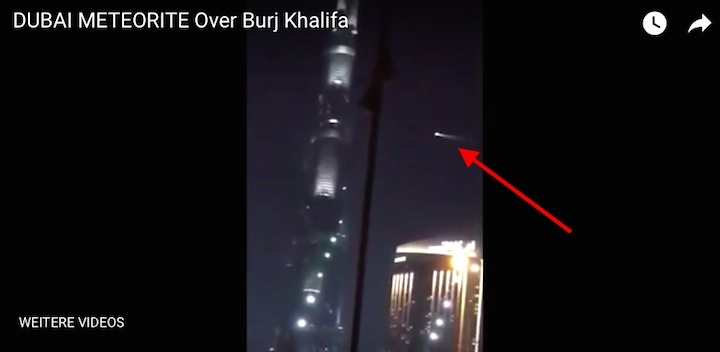
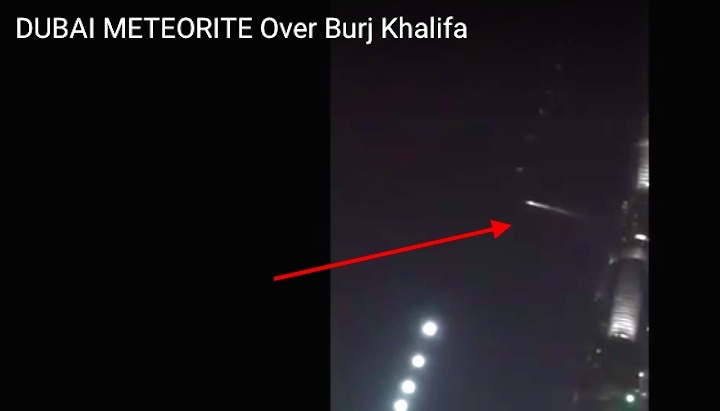
Später stellte es sich heraus, dass es sich höchstwahrscheinlich um die russische Trägerrakete "Sojus-2.1a" gehandelt haben könnte. Das teilte das Nachrichtenportal Thenational.ae mit Verweis auf die Astronomische Gruppe Dubais mit. Die Rakete startete am Samstag vom Weltraumbahnhof Baikonur im Kasachstan zur Internationalen Weltraumstation ISS. Sie brachte das Frachtraumschiff "Progress MS-01" in die Erdumlaufbahn. Dieses lieferte Brennstoff, Lebensmittel sowie andere Güter, die für das Funktionieren der ISS notwendig sind.
Video-Frams:
